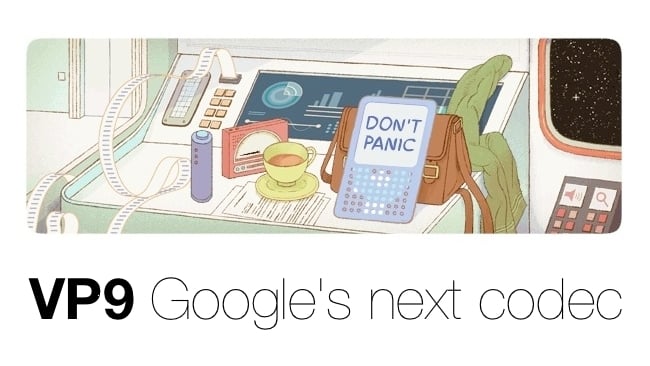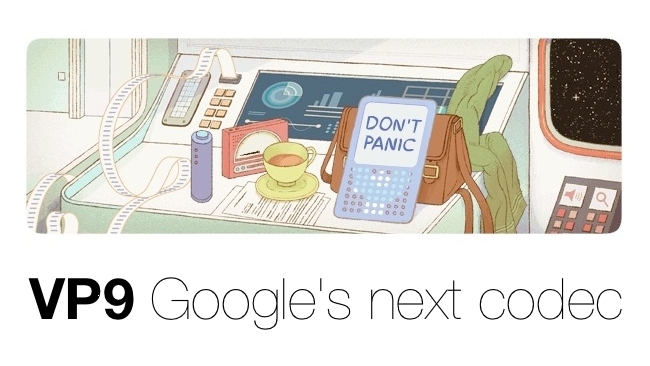
 The Google Doodle for Douglas Adams' 61st birthday seems weirdly appropriate here
The Google Doodle for Douglas Adams' 61st birthday seems weirdly appropriate here
Not content with indexing the internet and mapping the world – and its tax havens – Google is also starting to make loud noises about its latest video technology, VP9, and positioning it against both H.264 and HEVC.
The company argues that the new codec, available now in testing on both YouTube and in Chrome and due for completion on 17 June will save significant bandwidth costs over H.264.
"If you adopt VP9, as you can very quickly, you'll have tremendous advantages over anyone else out there using H.264 or [its predecessor] VP8," said VP9 engineer Ronald Bultje in a presentation at Google's developer conference. "You can save about 50% of bandwidth by encoding your video with VP9 vs. H.264."
First the problems. The VP9 spec won’t be finalised till mid-June, the industry has only really now started getting grips with its predecessor which has been out in the wild for over three years, there is an ongoing patent dispute dogging VP8, and Google itself admits that HEVC outperforms VP9 by about 1% when you examine image quality carefully.
However, all that has to be measured up against the fact that VP9 is free. HEVC will eventually be as well, but not until the licensing organisation MPEG LA finishes working on its complex patent royalty plans.
Will the rest of the industry take to it? Hard to say. But Google will be using it as soon as the spec is complete to help serve the 6bn hours of video that stream out of the YouTube servers each month, as well as folding it into its royalty-free WebM technology. From there, the dev team will turn to performance optimisation (clawing back that pesky 1% from HEVC being a priority no doubt) with hardware support coming later in the year.
A YouTube video channel featuring VP9 content can be found here.
Tags: Articles


Comments